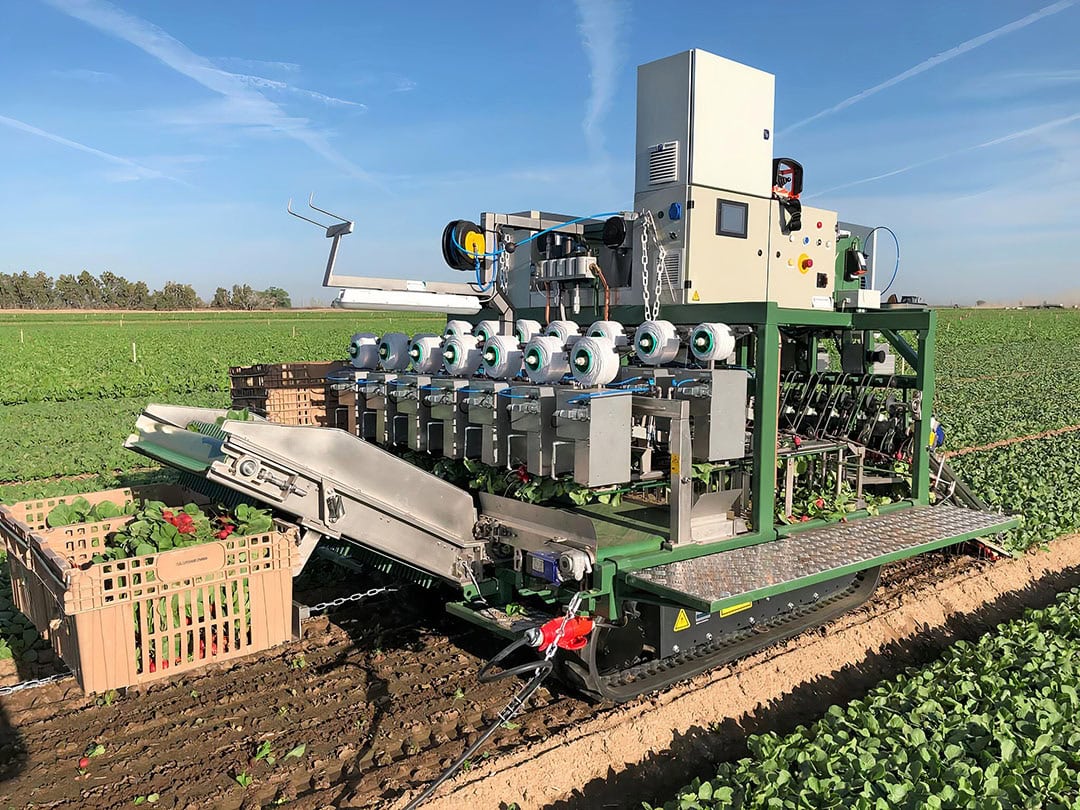More than 50 commercially available field robots in the Future Farming buying guide 2023

The marketplace for robots for open field crop production is growing at a near exponential rate. This makes it increasingly difficult for growers to distinguish and judge all offerings. Our new buyer’s guide provides a comprehensive overview of commercially available field robots.
Just before wrapping up the latest edition of Future Farming magazine, The Mixing Bowl and Better Food Ventures published their Crop Robotics Landscape 2022
with nearly 250 companies developing robotic systems for food crops today. It’s a mix of renowned tractor and implement manufacturers, field robot manufacturers with up to a decade of experience and numerous startups. The overview perfectly illustrates the rapidly changing landscape of automation and autonomation in farming.
Expectations are (sky) high
Most farmers we talk to can’t wait to see robots arriving on their farm. At the same time, they’re hesitant to adopt the new technology because it doesn’t always do what they expect from it. Like the adoption of GPS decades ago, their expectations are (sky) high. Developing robotic solutions for farming is a risky and challenging business and expectations and requirements differ from country to country and from region to region.
In fact, the first field and harvest robot manufacturers have already vanished from the market because they failed to reach the final technology and market readiness level before their funding ran out. And at this early stage of development and adoption, we also see robot models being phased out and succeeded by new models. How should growers choose in this rapidly changing marketplace and distinguish between companies that are here today but gone tomorrow and startups with the potential to remain in business?
Commercially available field robots from all over the world
With that in mind, Future Farming put together a completely new edition of the most comprehensive and complete field robot buyers’ guide, featuring commercially available field robots from all over the world. These are commercially available robots that can be bought, leased, rented or hired as a service in 2023. Some 110 manufacturers of field and harvest robots for open field crop production were approached to either update their existing listings and/or add their new robots.
Commercial availability in 2023 and a price indication are hard requirements. The latter resulted in manufacturers such as Carbon Robotics, Easton Robotics, Harvest CROO, Muddy Machines and Raven being excluded from the print catalogue because they weren’t willing to disclose their pricing. Their offerings can however still be found on a special webpage: Robots without pricing or not available anymore.
Categories to help you choose
A total of 50 field and harvest robots made it to this year’s edition of the buyers’ guide. About a dozen are new and included for the first time. Some of these are from startups that were founded in recent years and others include new robots from established manufacturers such as AgXeed, GUSS, Korechi and Naïo Technologies. Their portfolios are already expanding to three or even four models for various applications and sectors.
It makes quite a difference whether you’re looking for a robot specialised in for instance mechanical weeding or spraying, for a multipurpose robot or for a harvest robot for a particular type of crop or fruit. The robots in this catalogue are therefore divided into three categories:
- Specialised robots intended to perform a single task/job such as crop or field scouting, weed removal or spraying.
- Multipurpose robots that can perform multiple tasks by carrying different implements.
- Harvest robots that can harvest outdoor crops autonomously (we don’t include indoor/greenhouse harvest robots).
30 multipurpose robots
30 of the 50 commercially availabe field robots in the catalogue can be characterised as multi-purpose and thus capable of performing more than a single task or operation. Some are large and versatile (and expensive) enough to replace today’s tractors, while others are smaller and dedicated to weeding and other sorts of crop care.
Particularly interesting is the category harvest robots. These are mostly designed to harvest a particular type of crop or fruit and often face short harvest seasons. This results in challenging business cases for manufacturers, investors and most of all for farmers.
As labour is a key requirement for specialty crop growers as stated in the Global Harvest Automation Report from the Western Growers Association, robotic harvesting solutions can bring massive savings. Radish grower Ortolanda for instance, is saving up to 50% on harvesting costs by using a harvesting and bunching robot that replaces at least 12 people.
Text continues below image

Join 17,000+ subscribers
Subscribe to our newsletter to stay updated about all the need-to-know content in the agricultural sector, two times a week.



